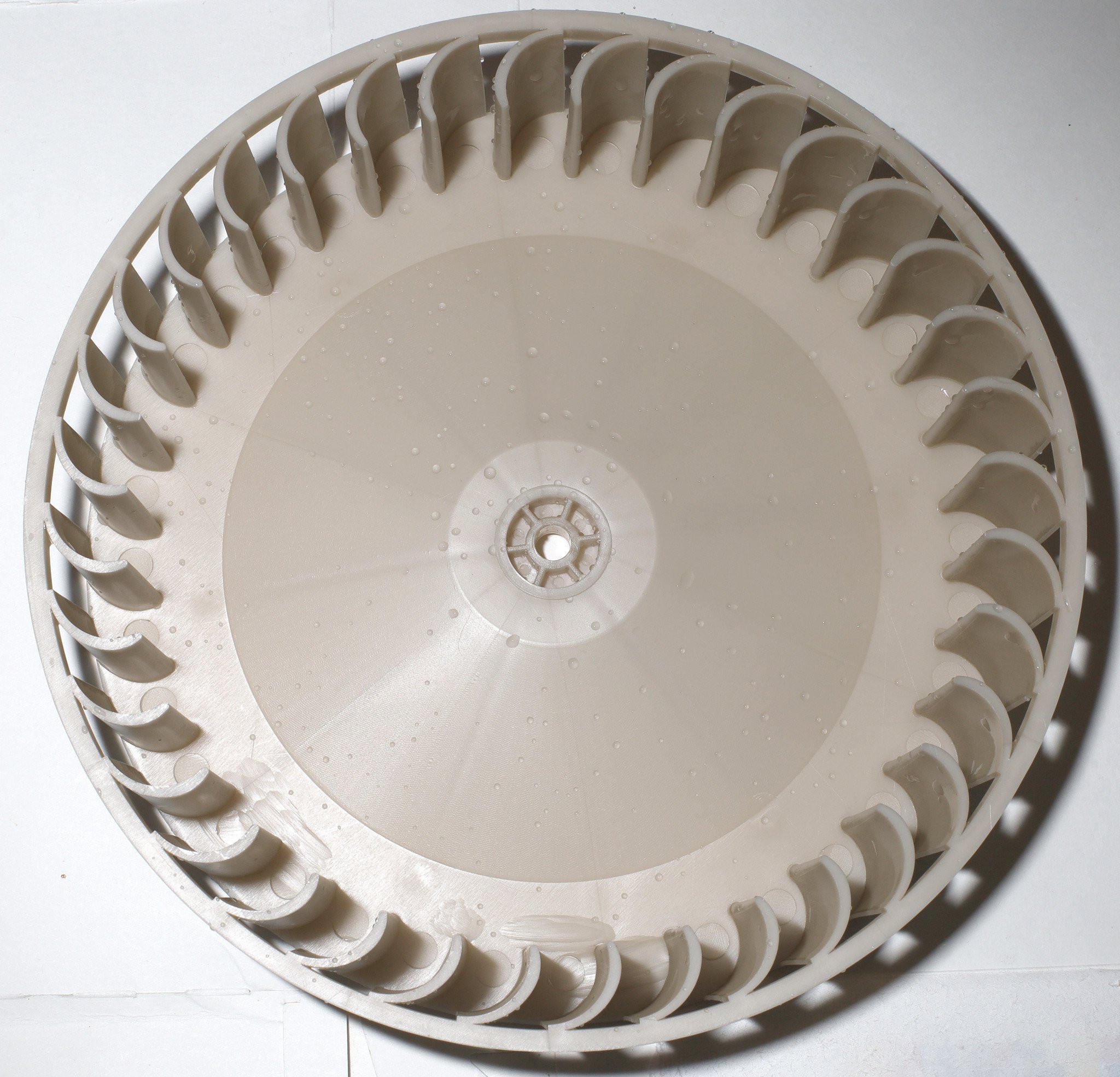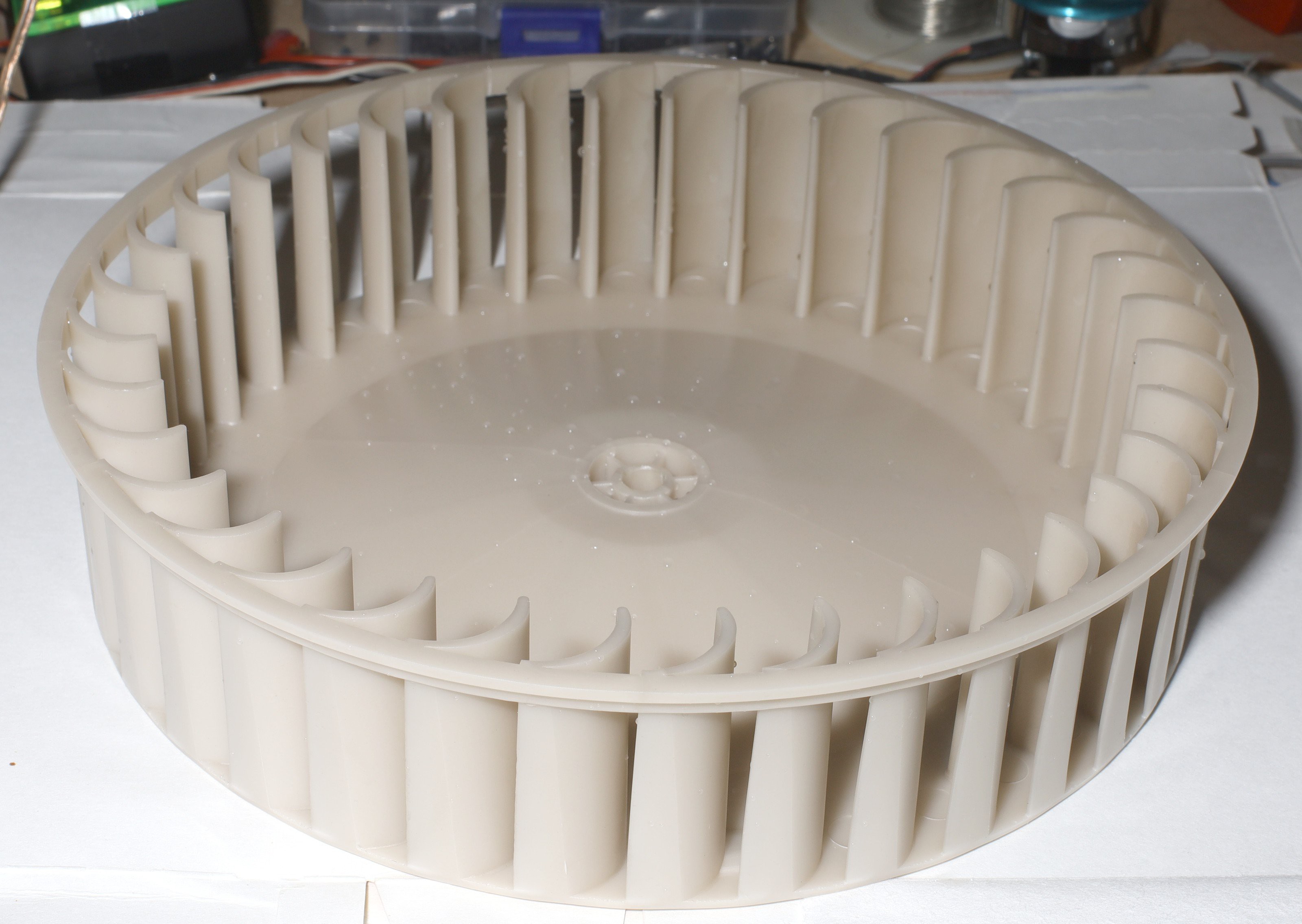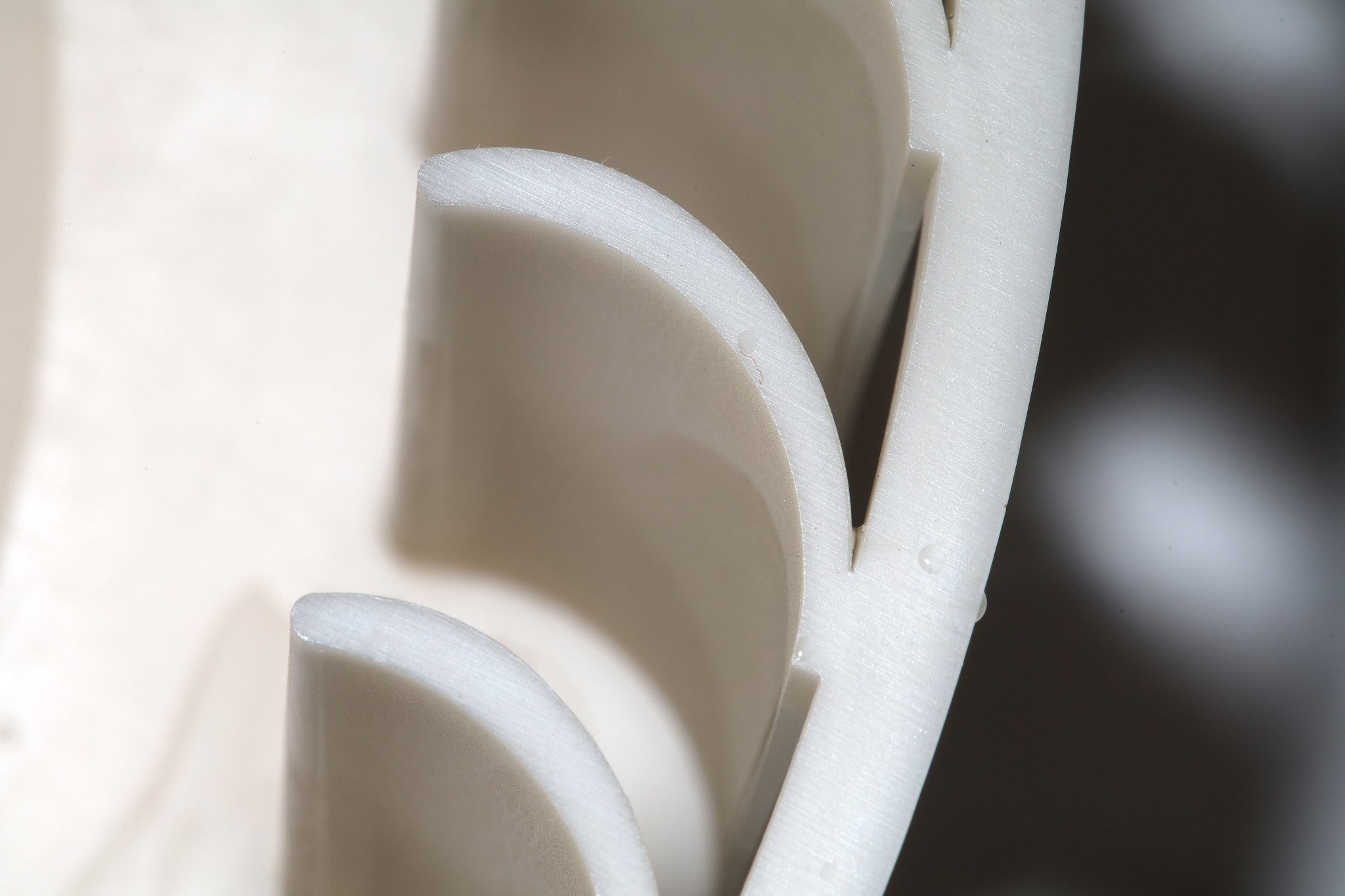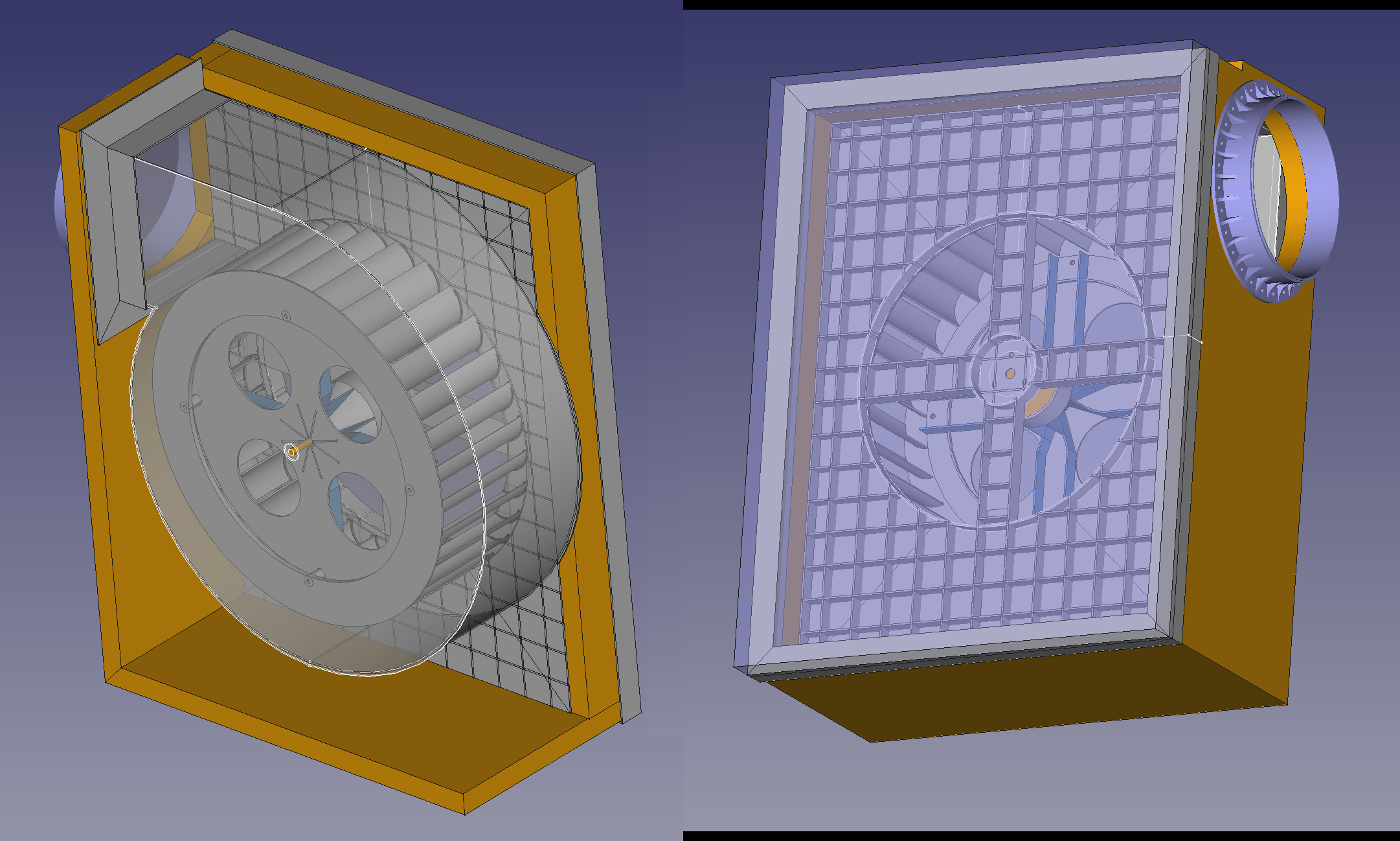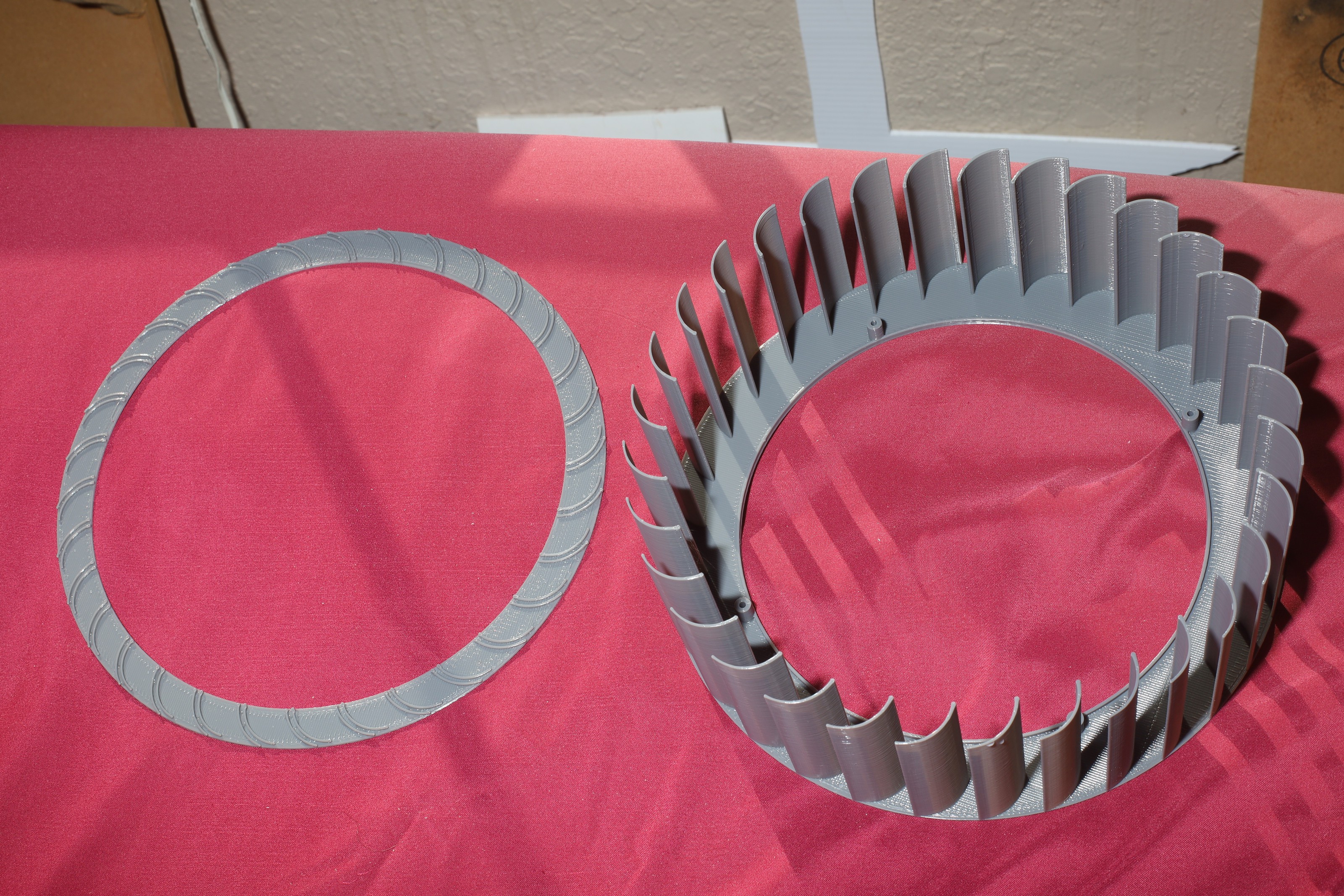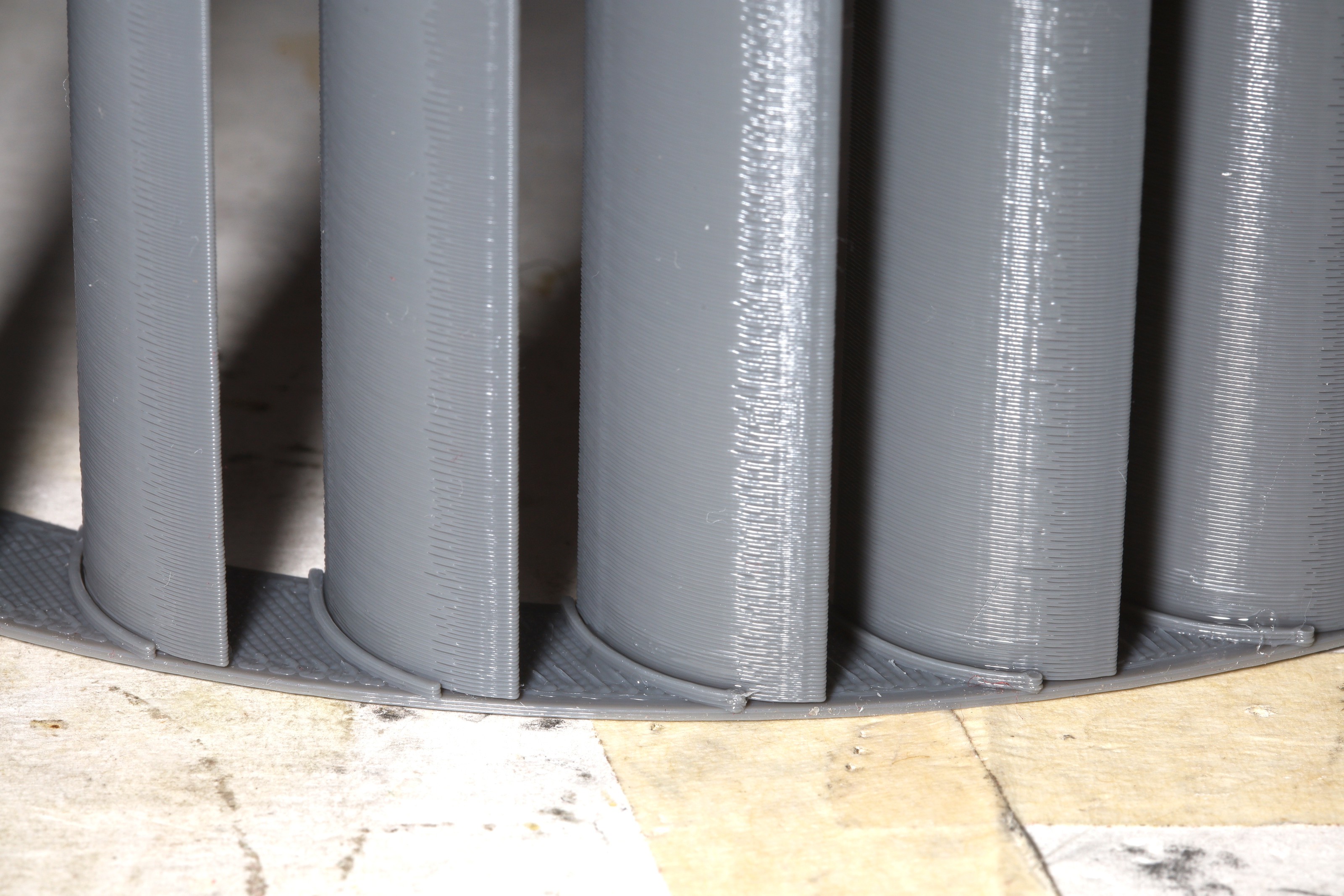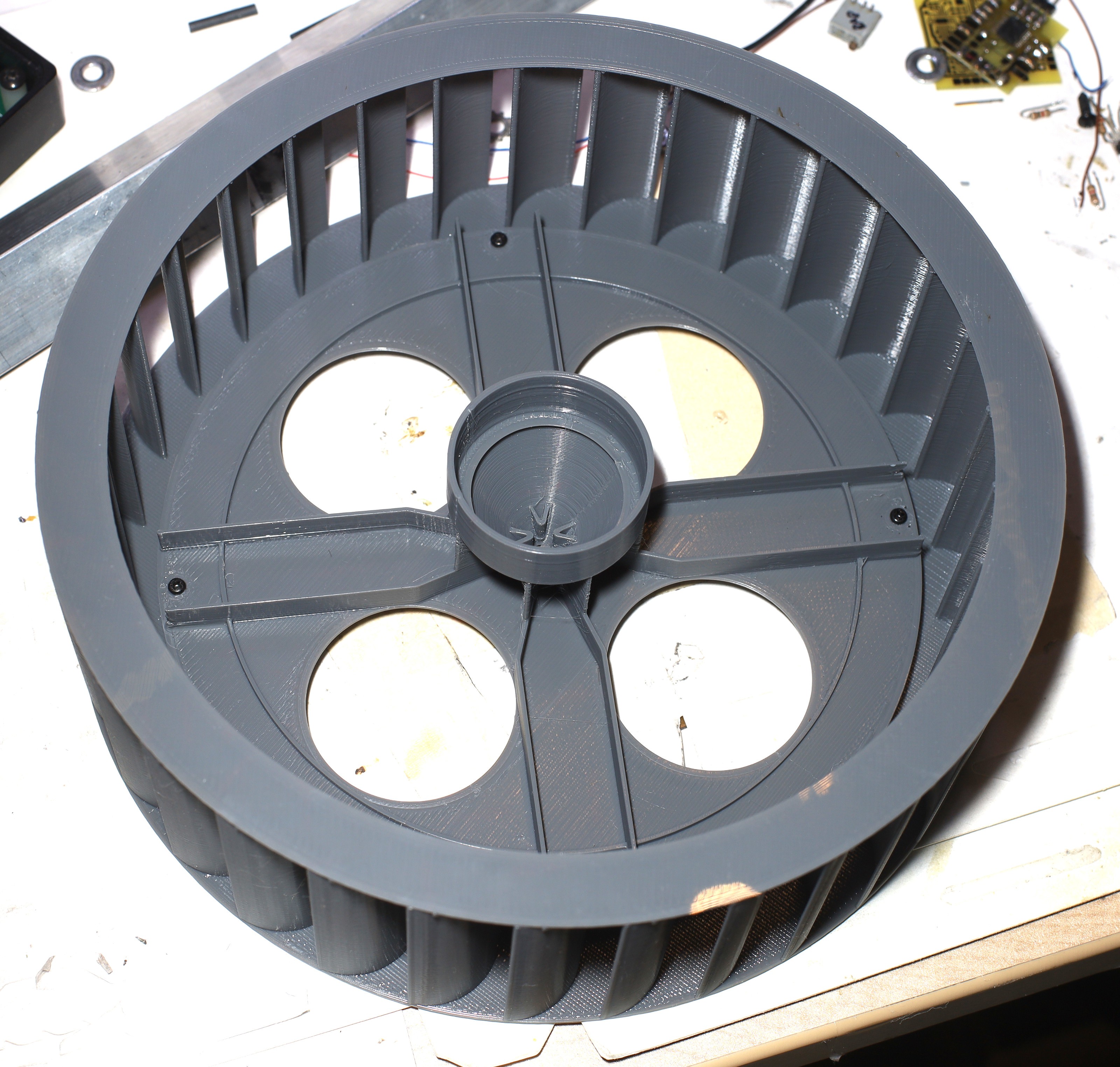-
Hunter dimensions
01/31/2024 at 03:23 • 0 comments![]()
![]()
A new used hunter arrived, with enough spare parts to supply the rest of the lion kingdom's renting years. The diameter of the squirrel cage was slightly bigger than the printed one. It's height was much shorter. The leading edges were still .5mm thick.
Its diameter without reinforcing ring was 212mm. Its height was 51mm, including the reinforcing ring & disc. It had 38 blades. The blade cross section was 17mm x 17mm. The thickest part of the blade was 2.5mm.
![]()
![]()
![]()
The mane problem continued to be the motor. There was no spare hunter motor in working condition.
-
The motor
01/13/2024 at 19:50 • 0 commentsThis thing hit the wall when the NY half marathon hit & the Hunter continued to squeek ever more. Eventually it squeeked full time at minimum power, more or less depending on how the nozzle was angled. Nozzle angle affects the resonant frequency.
The mane problems with the 3D printed blower are the .5mm leading edge thickness & the motor overheating. The blades could be printed sideways with support to get a .2mm leading edge but it would be expensive. They would have to be glued into guides & that would degrade efficiency again.
Intuitively, an RC motor which lifted a quad copter should be able to do the job but how low the RPM can go at a certain power is limited by the size of the windings & resistance. Helas, a compressor like a blower is a different load than a quad copter. There's also the problem of hobby motors having limited life bearings.Large hobby motors are so expensive, it's going to be cheaper to scavenge a motor from another Hunter. They're now $60 & up compared to $40 in 2001, but the currency also lost 99% of its value. The lion kingdom has 10 more years at most in a tiny unventilated apartment & that will be all for the blower, so the decision was made to just scavenge parts from another Hunter.
-
Enclosure concept
11/26/2023 at 03:26 • 0 commentsThe enclosure has to do many things. It has to attach to the F-35 nozzle. It has to hold the filter. It has to hold the motor.
The great challenge is the largest panel being dictated by the size of the filter, a 340x265mm area.
Then, the inlet needs to attach to the filter. It almost needs very thick wood panels to create enough of a bezel for the filter to tape on & for the inlet to bolt on.
![]()
That led to a something where the filter simply tapes on to the front of the blower. There's supposed to be a PLA border for the tape to grab onto, but it's structurally supported by a big piece of wood. It might be easier to paint the wood & tape directly onto the paint.
Around the filter, the inlet is supposed to bolt on. A large orthogrid was the easiest way to mount the motor to the wood. The orthogrid is manely a hole so it's not as expensive as it looks.
That was the general idea. Manufacturing it with required subdivisions is tricky. The great challenge with this is the shroud has to be removable, air tight, & silent. It most certainly needs a clamshell behind the orthogrid.
Making the required clamshell for the shroud will most certainly require scripting the model. All this is long enough in the future to go ahead & document the current state of the blower.
The mane thing that could be a problem is the lack of sharp leading edges. It doesn't move much air for the amount of power going in. There are dreams of making custom gcode to sharpen the leading edges or maybe reducing the line width.
-
Squirrel cage 1
11/26/2023 at 01:05 • 0 comments20 years after the arrival of the Hunter 30055, it started squeaking on anything but lowest power. Lubrication temporarily repaired it, but there's no way to access the motor without replacing the filter. It's more problematic when humidity is higher. The bushings may just be perished. That was how the Hunter died.
A standalone squirrel cage blower would now be many times the cost of the Hunter. Having never found a squirrel cage blower anywhere near as cheap as the Hunter, copying the 30055's squirrel cage would be easiest. Opening up the blower to measure the existing squirrel cage would entail killing more critters. If a spider is already set up or the gnats have invaded, it would need a full insecticide & cleaning. It's been the year of the monster gnat invasion. They constantly swarm outside & might be from a new neighbor's doge or the chopping down of a tree.
![]()
This rough concept got down to 108g of filament & 10 hours. It uses a .4 nozzle & .32mm layers. For more cost savings, it would have a detachable hub which attached to the motor. The squirrel cage could be redesigned independently of the hub. The concept is just the largest thing which can fit in the printer. The height is determined by the F-35 air vent. The F-35 would be integrated in the enclosure.
The mane unknown is the size & number of airfoils. Copying that would require cracking open the 30055 & facing spiders.
A rough estimate from the photos says there were 32 airfoils. The size is just the largest which doesn't overlap.
Another trick is the blower has to turn in the direction that tightens the motor farstener.
![]()
That led to this thing. The motor segment burns 51g with a .8 nozzle. The blower segment burns 81g with a .4 nozzle. This one turns clockwise. The trick is creating the airfoil overhangs. The airfoils just required a lot of CA.
![]()
There might be enough room to make it 4mm bigger, with cura tweeking & no skirt. The clamps are a bit marginal.
![]()
![]()
It's devilish hard to get the entire thing assembled with 1mm fiducials. The fiducials could be 2mm but it would be less efficient. The easiest assembly method was to press it all together & glue around the edges.
![]()
![]()
![]()
Mounted on a test jig, it definitely blows. It's noisy. It goes up to 50W, then the ESC gets hot. It's definitely unbalanced. An enclosure would need big gaps. The motor needs a slower winding. It needs 1 more mm of height above the motor mount point. Reprinting just the motor attachment could do this.
The enclosure would be a multi print job.
 lion mclionhead
lion mclionhead
